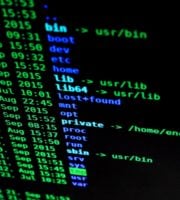A reported 14.5 billion spam emails are sent out every day, so it isn’t uncommon to receive these annoying messages in your email inbox regularly. Also, you may occasionally receive suspicious-looking emails that could be well-disguised phishing scams. Therefore, You must know what to do if you receive spam or potential phishing emails. Below is a guide to tackle spam and other suspicious emails effectively.
Verify From A Trusted Source
If you receive suspicious mail, it is always best to verify any requested action before taking it. These emails are, after all, from an organization you have an existing relationship with, so you can readily call their advertised phone number to confirm. In addition, you can visit their official website for information or log in to your account without using any links in the received emails.
Finally, check whether the official source has already informed you of their requirements. For instance, your bank may have specified that they will never request your password, so you can automatically disregard any emails from your ‘bank’ asking for your password.
Report The Email To Your IT Department And Manager
Many companies have corporate security policies that tackle phishing emails using their address. Therefore, you can immediately report the incident to your in-house IT department, IT manager, or outsourced IT company. You will typically be required to fill out an online report, forward the phishing email to a specific address, or log a ticket, so follow all these instructions to the letter for the best results.
Mark The Sender As Spam Or Junk
You will most likely not want to receive any more spam or phishing emails. Thankfully, many email services like Gmail and Yahoo Mail allow you to mark emails as spam or junk, sending them to the spam folder immediately. Therefore, any further spam email will be blocked from entering your inbox.
Delete The Email
You can also outrightly trash the email after detecting and reporting it since there is no point in keeping it. Deleted emails typically go to the trash folder, so make sure to remove them from there as well.
Don’t Panic, And Don’t Click Any Links
Not taking action is often the best thing to do immediately after receiving a potential phishing email or spam. As such, never click any link in any email, open an attachment, or undertake any action required of you in the email. Many experts advise against even replying to the sender since your reply might confirm your email address’s activeness, making you more of a target.
Send A Report To Your Email Provider
All email providers have established processes to handle reporting phishing emails. Therefore, report any phishing emails and spam to your provider, helping them improve their spam and junk filters to prevent these emails from getting through to you in the future.







